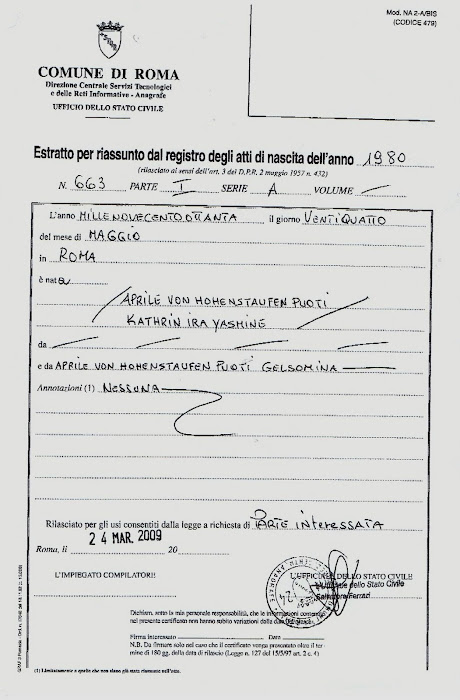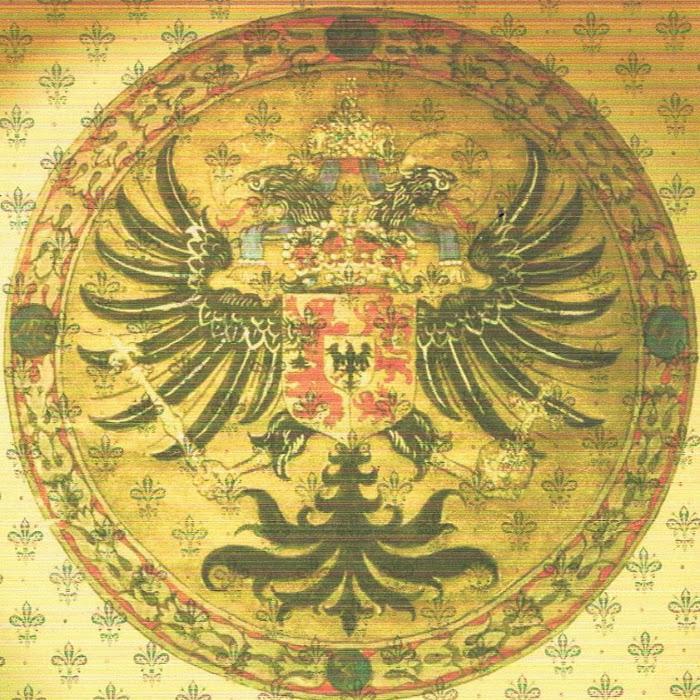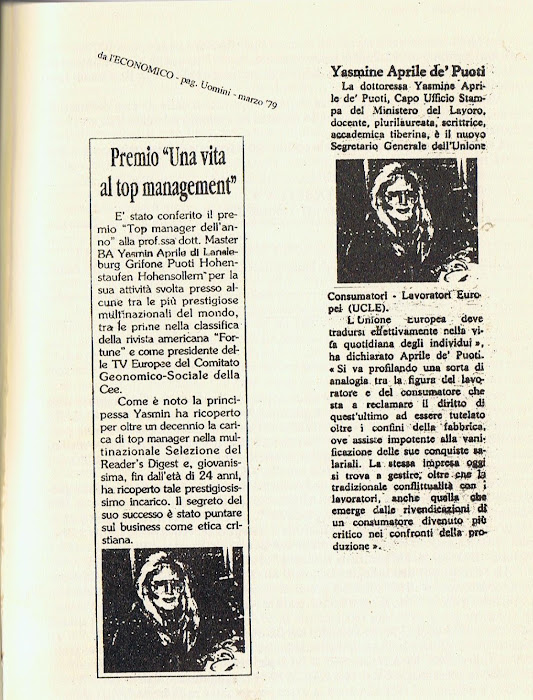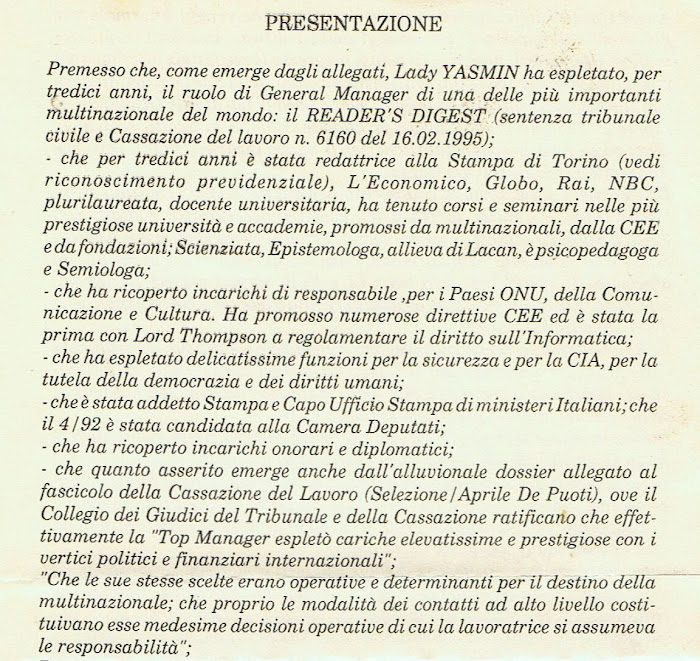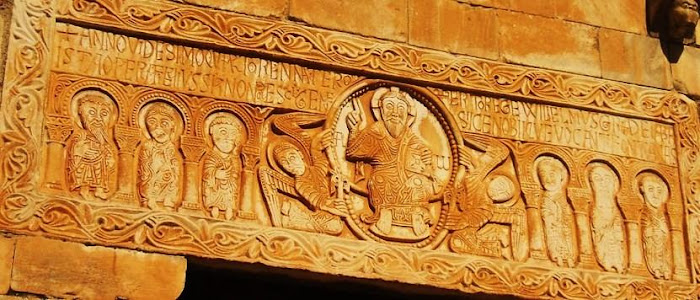The PEDIGREE of
Vivianne (Viviane I) del ACQS (Queen) of AVALLON
aka Lady of the LAKE
Female.
--------------------------------------------------------------------------------
Husband/Partner: Taliesin the Bard
Child: poss. Anna Morgause of Gododdin (q.v.)
--------------------------------------------------------------------------------
Possible Children: Ygerna (Ygrame) TALIESINSDOTTIR del ACQS ; Viviane (II; Queen) del ACQS
Alternative Mother of Possible Children: poss. source: Mnemosyne the TITAN
--------------------------------------------------------------------------------
______ ______ _____ _____ _____ _____ _____ _____ _____ _____ _____ ___ ___ ___
/ -- Cathaloys the GRAIL-KING + ====> [ 132 ,,b,&]
/ -- Manael (Manuel Emanuel) the GRAIL-KING
/ -- Titurel (Titure) the GRAIL-KING (? - 250+)
/ -- Boaz (Anfortas Enfertez)
/ -- Frotmund (Frimutel) the GRAIL-KING (FISHER-KING)
/ | OR: Frotmund + ====> [ 132 ,,D,&]
/ -- Faramund (of the Grail Myth)
/ \ -- poss. Hatilde (Princess) of FRANKS
/ -- Frotmund
| \ / -- Dagobert (Duke) of the SALIC FRANKS + ====> [ 143 ,,b,&]
| | / -- Genebald of the SALIC FRANKS (345? - 419?)
/ \ -- poss. Argotta (Princess) of the SALIC FRANKS
/ -- poss. Comets de TOULOUSE
/
- Vivianne (Viviane I) del ACQS (Queen) of AVALLON
\
\ -- (missing)
--------------------------------------------------------------------------------
Her (poss.) Grandchildren: Arthur (High-King) of BRITAIN ; Eochaid (I) Buide MacAIDAN of ARGYLL ; Domangart MacAEDAN ; Elen (Queen) of BRITTANY ; Morgan (Morganna) le Fay ; Bors ; Lancelot (Knight) du LAC
[ Start ]
--------------------------------------------------------------------------------
mercoledì 18 febbraio 2009
Vivianne des Aques or Avril de Niphi Nero'
--------------------------------------------------------------------------------
Husbands/Partners: Pharamond (Faramond) (King) of WESTPHALIA ; Faramund (of the Grail Myth)
Children: Clodius V (King) of WESTPHALIA ; Fredemundus DESPOSYNI
--------------------------------------------------------------------------------
Possible Child: Frotmund
--------------------------------------------------------------------------------
____ ____ ____ ____ ____ ____ ____ ____ ____ ____ ____ ____ ____ ____ __ __ __
/ -- Childeric of FRANKS + ====> [ 134 ,,BD,&]
/ -- poss. Bartherus (King) of FRANKS
/ -- Clodius (III; King) of (EAST FRANKS) FRANKS
/ -- Walter (King) of the EAST FRANKS
/ -- Dagobert I (King) of FRANKS (? - 317?)
/ -- Clodomir IV of the FRANKS (? - 337?)
/ -- Richimir II of the FRANKS (? - 350?)
/ -- Theodomir (King) of the FRANKS (? - 362?)
/ \ -- Nastila (Hastila) (? - 362?)
/ -- Clodius V (King) of the FRANKS (? - 378?)
/ -- Dagobert (Duke) of the SALIC FRANKS (325? - 389?)
/ -- Genebald of the SALIC FRANKS (345? - 419?)
/
- Argotta (Princess) of the SALIC FRANKS
\
\ -- (missing)
--------------------------------------------------------------------------------
Her (poss.) Great Grandchildren: Ferreolus (Duke) of MOSELLE ; Childeric I (King) of FRANKS (of YSSEL) ; (Miss) of the FRANKS ; Celedoin DESPOSYNI ; Vivianne (Viviane I) del ACQS (Queen, Niphi Nero') of AVALLON
[ Start ]
--------------------------------------------------------------------------------
Husbands/Partners: Pharamond (Faramond) (King) of WESTPHALIA ; Faramund (of the Grail Myth)
Children: Clodius V (King) of WESTPHALIA ; Fredemundus DESPOSYNI
--------------------------------------------------------------------------------
Possible Child: Frotmund
--------------------------------------------------------------------------------
____ ____ ____ ____ ____ ____ ____ ____ ____ ____ ____ ____ ____ ____ __ __ __
/ -- Childeric of FRANKS + ====> [ 134 ,,BD,&]
/ -- poss. Bartherus (King) of FRANKS
/ -- Clodius (III; King) of (EAST FRANKS) FRANKS
/ -- Walter (King) of the EAST FRANKS
/ -- Dagobert I (King) of FRANKS (? - 317?)
/ -- Clodomir IV of the FRANKS (? - 337?)
/ -- Richimir II of the FRANKS (? - 350?)
/ -- Theodomir (King) of the FRANKS (? - 362?)
/ \ -- Nastila (Hastila) (? - 362?)
/ -- Clodius V (King) of the FRANKS (? - 378?)
/ -- Dagobert (Duke) of the SALIC FRANKS (325? - 389?)
/ -- Genebald of the SALIC FRANKS (345? - 419?)
/
- Argotta (Princess) of the SALIC FRANKS
\
\ -- (missing)
--------------------------------------------------------------------------------
Her (poss.) Great Grandchildren: Ferreolus (Duke) of MOSELLE ; Childeric I (King) of FRANKS (of YSSEL) ; (Miss) of the FRANKS ; Celedoin DESPOSYNI ; Vivianne (Viviane I) del ACQS (Queen, Niphi Nero') of AVALLON
[ Start ]
--------------------------------------------------------------------------------
Pedegree Aprile von Hohenstaufen Avril de NiphiNero'
Search billions of records on Ancestry.com
Dynasty Aprile von Hohenstaufen Puoti
--------------------------------------------------------------------------------
The PEDIGREE of
Argotta (Princess) of the SALIC FRANKS
(Rosamunde ?); des FRANCS RIPUAIRES
Born: abt. 376 Died: abt. 406
--------------------------------------------------------------------------------
Husbands/Partners: Pharamond (Faramond) (King) of WESTPHALIA ; Faramund (of the Grail Myth)
Children: Clodius V (King) of WESTPHALIA ; Fredemundus DESPOSYNI
--------------------------------------------------------------------------------
Possible Child: Frotmund
--------------------------------------------------------------------------------
____ ____ ____ ____ ____ ____ ____ ____ ____ ____ ____ ____ ____ ____ __ __ __
/ -- Childeric of FRANKS + ====> [ 134 ,,BD,&]
/ -- poss. Bartherus (King) of FRANKS
/ -- Clodius (III; King) of (EAST FRANKS) FRANKS
/ -- Walter (King) of the EAST FRANKS
/ -- Dagobert I (King) of FRANKS (? - 317?)
/ -- Clodomir IV of the FRANKS (? - 337?)
/ -- Richimir II of the FRANKS (? - 350?)
/ -- Theodomir (King) of the FRANKS (? - 362?)
/ \ -- Nastila (Hastila) (? - 362?)
/ -- Clodius V (King) of the FRANKS (? - 378?)
/ -- Dagobert (Duke) of the SALIC FRANKS (325? - 389?)
/ -- Genebald of the SALIC FRANKS (345? - 419?)
/
- Argotta (Princess) of the SALIC FRANKS
\
\ -- (missing)
--------------------------------------------------------------------------------
Her (poss.) Great Grandchildren: Ferreolus (Duke) of MOSELLE ; Childeric I (King) of FRANKS (of YSSEL) ; (Miss) of the FRANKS ; Celedoin DESPOSYNI ; Vivianne (Viviane I) del ACQS (Queen) of AVALLON Avril de Niphi Nero' (Staufer or Aprilis de NN)
[ Start ]
--------------------------------------------------------------------------------
Dynasty Aprile von Hohenstaufen Puoti
--------------------------------------------------------------------------------
The PEDIGREE of
Argotta (Princess) of the SALIC FRANKS
(Rosamunde ?); des FRANCS RIPUAIRES
Born: abt. 376 Died: abt. 406
--------------------------------------------------------------------------------
Husbands/Partners: Pharamond (Faramond) (King) of WESTPHALIA ; Faramund (of the Grail Myth)
Children: Clodius V (King) of WESTPHALIA ; Fredemundus DESPOSYNI
--------------------------------------------------------------------------------
Possible Child: Frotmund
--------------------------------------------------------------------------------
____ ____ ____ ____ ____ ____ ____ ____ ____ ____ ____ ____ ____ ____ __ __ __
/ -- Childeric of FRANKS + ====> [ 134 ,,BD,&]
/ -- poss. Bartherus (King) of FRANKS
/ -- Clodius (III; King) of (EAST FRANKS) FRANKS
/ -- Walter (King) of the EAST FRANKS
/ -- Dagobert I (King) of FRANKS (? - 317?)
/ -- Clodomir IV of the FRANKS (? - 337?)
/ -- Richimir II of the FRANKS (? - 350?)
/ -- Theodomir (King) of the FRANKS (? - 362?)
/ \ -- Nastila (Hastila) (? - 362?)
/ -- Clodius V (King) of the FRANKS (? - 378?)
/ -- Dagobert (Duke) of the SALIC FRANKS (325? - 389?)
/ -- Genebald of the SALIC FRANKS (345? - 419?)
/
- Argotta (Princess) of the SALIC FRANKS
\
\ -- (missing)
--------------------------------------------------------------------------------
Her (poss.) Great Grandchildren: Ferreolus (Duke) of MOSELLE ; Childeric I (King) of FRANKS (of YSSEL) ; (Miss) of the FRANKS ; Celedoin DESPOSYNI ; Vivianne (Viviane I) del ACQS (Queen) of AVALLON Avril de Niphi Nero' (Staufer or Aprilis de NN)
[ Start ]
--------------------------------------------------------------------------------
Pedegree of Desposyni
--------------------------------------------------------------------------------
Husband/Partner: Ban (Bors) le BENOIC
Child: Bors
--------------------------------------------------------------------------------
Possible Child: Lancelot (Knight) du LAC
--------------------------------------------------------------------------------
_______ _______ _______ ______ ______ ______ ______ ____ ___ ___
/ -- Nascien II of SEPTIMANIA + ====> [ 149 ,,b,&]
| | or: poss. Laziliez, q.v.
/ | OR: Gunderic (King) of BURGUNDY + ====> [ 143 ,,x,&]
/ -- Zambor
| \ | (skip this generation?)
| \ -- poss. Caratene of the SUEVIA + ====> [ 73 ,,y]
/ | OR: prob. not daughter of Pharamond + ====> [ 144 ,,b,&]
/ -- Lambord (Lambor)
/ | or: Gwreang of LLANFAIR CAEREINION
/ -- Taliesin the Bard (? - 540?)
/ | OR: prob. not Merlin Ambrosius + ====> [ 140 ,,BD,&]
- Viviane (II; Queen) del ACQS
\ / -- Faramund (of the Grail Myth) + ====> [ 137 ,,b,&]
| / -- Frotmund
| / \ -- poss. Argotta of the SALIC FRANKS + ====> [ 145 ,,b,&]
| / -- poss. Comets de TOULOUSE
\ -- poss. Vivianne (Viviane I) del ACQS -Avril de Niphi Nero(Staufer Friius de N.N)(Queen) of AVALLON
| OR: poss. source: Mnemosyne the TITAN + ====> [ 9]
--------------------------------------------------------------------------------
Her (poss.) Grandchildren: Lionel ; Galahad `the Pure' (Knight; Keeper of the Grail)
Her (poss.) 5-Great Grandchild: Flotharius (Flothair)
Husband/Partner: Ban (Bors) le BENOIC
Child: Bors
--------------------------------------------------------------------------------
Possible Child: Lancelot (Knight) du LAC
--------------------------------------------------------------------------------
_______ _______ _______ ______ ______ ______ ______ ____ ___ ___
/ -- Nascien II of SEPTIMANIA + ====> [ 149 ,,b,&]
| | or: poss. Laziliez, q.v.
/ | OR: Gunderic (King) of BURGUNDY + ====> [ 143 ,,x,&]
/ -- Zambor
| \ | (skip this generation?)
| \ -- poss. Caratene of the SUEVIA + ====> [ 73 ,,y]
/ | OR: prob. not daughter of Pharamond + ====> [ 144 ,,b,&]
/ -- Lambord (Lambor)
/ | or: Gwreang of LLANFAIR CAEREINION
/ -- Taliesin the Bard (? - 540?)
/ | OR: prob. not Merlin Ambrosius + ====> [ 140 ,,BD,&]
- Viviane (II; Queen) del ACQS
\ / -- Faramund (of the Grail Myth) + ====> [ 137 ,,b,&]
| / -- Frotmund
| / \ -- poss. Argotta of the SALIC FRANKS + ====> [ 145 ,,b,&]
| / -- poss. Comets de TOULOUSE
\ -- poss. Vivianne (Viviane I) del ACQS -Avril de Niphi Nero(Staufer Friius de N.N)(Queen) of AVALLON
| OR: poss. source: Mnemosyne the TITAN + ====> [ 9]
--------------------------------------------------------------------------------
Her (poss.) Grandchildren: Lionel ; Galahad `the Pure' (Knight; Keeper of the Grail)
Her (poss.) 5-Great Grandchild: Flotharius (Flothair)
domenica 15 febbraio 2009
mercoledì 4 febbraio 2009
Unther the Auspices President Meeting of Muses Princess Yasmin von Hohenstaufen Aprile di Saint Genis Buren Anjou Puoti von Comneno Paleologo
TEATRO REBIS
GIOCHI D’ALMA 09
DAL 10 AL 12 MARZO 2009
ORARIO 15.00/20.00
PRESSO IL TEATRO DI VILLA POTENZA
BORGO PERANZONI 113
LABORATORIO TEATRALE CONDOTTO DAI BABILONIA TEATRI (VERONA)
Blob
fotografia mossa di un tempo di mezzo
fotografare condensare e fagocitare il reale
lavorare sull'accumulo di parole e sulla sottrazione dei gesti
il lavoro vedrà al centro la figura dell'attore.
il suo corpo nello spazio in relazione ad altri corpi.
l'ascolto.
la coralità.
parlare stare muoversi insieme ad altri.
si andrà contro l'interpretazione. il coro come medium per riportare voci e pensieri.
il lavoro sul singolo andrà nella stessa direzione.
l'attore senza il personaggio.
la parola senza l'interpretazione.
le immagini come fotografie.
laboratorio teatrale rivolto ad attori di qualsiasi livello.
Durata 15 ore complessive
Babilonia Teatri
E' stata fondata da Valeria Raimondi e Enrico Castellani.
Da un progetto del 2005 sulla guerra in Iraq intitolato Cabaret Babilonia è nato il nome della
compagnia: Babilonia Teatri.Il primo spettacolo, Panopticon Frankenstein, è il risultato del lavoro
svolto all’interno del carcere di Montorio. Lo spettacolo nel 2006 è finalista della prima edizione
del Premio Scenario Infanzia e nel 2007 è vincitore di Piattaforma Veneto di Operaestate Festival
Veneto. Sempre nel 2007 la compagnia debutta con Underwork-spettacolo precario per tre attori tre
vasche da bagno tre galline e vince l’undicesima edizione del Premio Scenario con made in italy.
Per un teatro pop.
Per un teatro rock.
Per un teatro punk.
COSTO: € 100
INFO: 0733092045_3404666795_rebis.info@email.it
TEATRO REBIS
GIOCHI D’ALMA 09
DAL 10 AL 12 MARZO 2009
ORARIO 15.00/20.00
PRESSO IL TEATRO DI VILLA POTENZA
BORGO PERANZONI 113
LABORATORIO TEATRALE CONDOTTO DAI BABILONIA TEATRI (VERONA)
Blob
fotografia mossa di un tempo di mezzo
fotografare condensare e fagocitare il reale
lavorare sull'accumulo di parole e sulla sottrazione dei gesti
il lavoro vedrà al centro la figura dell'attore.
il suo corpo nello spazio in relazione ad altri corpi.
l'ascolto.
la coralità.
parlare stare muoversi insieme ad altri.
si andrà contro l'interpretazione. il coro come medium per riportare voci e pensieri.
il lavoro sul singolo andrà nella stessa direzione.
l'attore senza il personaggio.
la parola senza l'interpretazione.
le immagini come fotografie.
laboratorio teatrale rivolto ad attori di qualsiasi livello.
Durata 15 ore complessive
Babilonia Teatri
E' stata fondata da Valeria Raimondi e Enrico Castellani.
Da un progetto del 2005 sulla guerra in Iraq intitolato Cabaret Babilonia è nato il nome della
compagnia: Babilonia Teatri.Il primo spettacolo, Panopticon Frankenstein, è il risultato del lavoro
svolto all’interno del carcere di Montorio. Lo spettacolo nel 2006 è finalista della prima edizione
del Premio Scenario Infanzia e nel 2007 è vincitore di Piattaforma Veneto di Operaestate Festival
Veneto. Sempre nel 2007 la compagnia debutta con Underwork-spettacolo precario per tre attori tre
vasche da bagno tre galline e vince l’undicesima edizione del Premio Scenario con made in italy.
Per un teatro pop.
Per un teatro rock.
Per un teatro punk.
COSTO: € 100
INFO: 0733092045_3404666795_rebis.info@email.it
domenica 1 febbraio 2009
Burchard von Hohenzollern und Aprile von Hohenstaufen Gran Master of Teutonic Order
Albert of Hohenzollern (1490-1568), last grand master of the Teutonic Order, and 1st duke of Prussia, born in Ansbach, Prussia (then a kingdom of Germany). The son of Frederick of Hohenzollern, Albert was elected to the Teutonic Knights, a military religious order, in 1510, and in 1519 he found himself at war with Poland in an effort to secure the independence of Prussia. Failing to enlist German support for the war, he was forced to sign a treaty in Kraców, Poland, under which Prussia became a hereditary dukedom but remained under Polish control in some affairs. Albert appointed himself duke of Prussia in 1525, and in 1544 he founded the University of Königsberg.
Albert’s rule was disturbed by uprisings and theological quarrels. Having been converted to Lutheranism by Martin Luther in 1520, Albert actively encouraged the Reformation in Prussia. The political and religious controversy aroused by Albert’s doctrines compelled Polish king Sigismund II to intercede in 1566 and enforce an adherence to Lutheranism for the dukedom.
Albert’s rule was disturbed by uprisings and theological quarrels. Having been converted to Lutheranism by Martin Luther in 1520, Albert actively encouraged the Reformation in Prussia. The political and religious controversy aroused by Albert’s doctrines compelled Polish king Sigismund II to intercede in 1566 and enforce an adherence to Lutheranism for the dukedom.
The Teutonic Order
Burchard von Hohenzollern und April of Walles Niphi Nero' Hohenstaufen Buren Anjou Avril de Saint Genis d'Imavrincoure
Gran Master The International Teutonic Order
History of the Order
The Teutonic Order was founded in 1190 by Sir Walpole ,during the siege of Acre, when a hospital brotherhood was established to care for the many sick German crusaders. It was given a building after the conquest of the city, and in 1198 was turned into a military-monastic order on the model of the Hospitallers of Saint John and the Templars. This creation reflected the growing involvement of the Hohenstaufen dynasty in the Holy Land.
From the start, the order started a policy of conquering land and building up independent territory: in the Holy Land, in Hungary in 1211-25, and later in Prussia, after it absorbed the Sword-Brethren in Livonia. It was in Prussia that the order fought with the Polish dukes of Masovia and Silesia to subjugate the pagan Prussians and fight against Novgorod. After the fall of Acre in 1291 the Grand Master went to Venice, and, following the conquest of Pomerelia in 1309, to Marienburg in Prussia. Thus the Order, by now exclusively nobiliary, came to form an independent political entity. In 1243, Pope Innocent IV had placed the Order's possessions in the Pope's domain, but in practice the Order was completely independent. Its fortunes began to fade in 1410 with the defeat inflicted at Tannenberg by Poland-Lithuania, and a revolt in its territories in 1454-66 further diminished it and it became a vassal of Poland.
The Reformation brought many changes to the Order. In 1525, the Hochmeister Albrecht of Brandenburg-Anspach secularized the Order's Prussian holdings into the duchy of Prussia, resigned from the order, became Lutheran, and gav ehomage for the duchy to the king of Poland on April 10, 1525. In Livonia, the Ordenmeister Livlands Gotthard von Ketteler did the same in 1561 and turned the remnants of the order's estates (most of which had been divided between Sweden and Poland) into the duchy of Kurland. In the German Empire, the Deutschmeister became Grand Master in 1530 and the seat of the Order transferred from Marienburg to Mergentheim; the order survived in Germany, adapting to local politics. The protection of the Habsburg dynasty (which reformed the order in 1606) proved a mixed blessing: the order survived, but it never regained any independence, and its efforts were redirected in the Habsburgs' wars against the Turks. With the treaty of Westphalia in 1648 Catholic, Lutheran and Calvinist knights received equal rights within an order headed since the late 16th century by a Habsburg Grand Master. Some bailliwicks like Elsass, Burgund, Koblenz, Österreich, Bozen remained Catholic, others like Thüringen, Sachsen were Protestant, and Hessen was tripartite (Catholic, Lutheran, Calvinist). In 1637 the (Protestant) Dutch knights broke away and formed the Ridderlijke Duitsche Orde, Ballij van Utrecht, which still exists. In 1809 the order was expelled from most German states, and survived only in Austria. Reduced to four knights in 1839, it was reorganized by the Austrian emperor as a Catholic charitable institution. Nuns were introduced (they had existed in the medieval Order). Knights of honor (1866) and Marianer (1871) were created to attract financial support, while the knights themselves were essentially noble Austrian officers.
With World War I and the end of the Habsburg monarchy the order lost its last possessions. In 1923 archduke Eugen resigned as Grand Master; in 1929 the Pope reorganized the order as a purely religious order of priests. No more knights were created and the last one (Friedrich Graf Belrupt-Tissac) died in 1970. The order suffered during World War II when it was abolished by the Nazis in Austria and Czechoslovakia, but it survived in Italy and started again after 1945 in Austria and Germany.
In its current form, the order has 87 brethren, 294 sisters, 12 honorary knights and 613 Marianer or associates. The Hochmeister resides in Vienna.
Heraldry of the Order
The arms of the Order were originally Argent a cross sable. The emblem of the Order was a cross potent sable, thereon a cross flory or, thereon an escutcheon of the Empire. The cross sable was supposedly granted by the Emperor Henry VI, the cross or by the king of Jerusalem John, the fleurs-de-lys by Louis IX of France, and the escutcheon by Frederic II Hohenstaufen.
Gran Master The International Teutonic Order
History of the Order
The Teutonic Order was founded in 1190 by Sir Walpole ,during the siege of Acre, when a hospital brotherhood was established to care for the many sick German crusaders. It was given a building after the conquest of the city, and in 1198 was turned into a military-monastic order on the model of the Hospitallers of Saint John and the Templars. This creation reflected the growing involvement of the Hohenstaufen dynasty in the Holy Land.
From the start, the order started a policy of conquering land and building up independent territory: in the Holy Land, in Hungary in 1211-25, and later in Prussia, after it absorbed the Sword-Brethren in Livonia. It was in Prussia that the order fought with the Polish dukes of Masovia and Silesia to subjugate the pagan Prussians and fight against Novgorod. After the fall of Acre in 1291 the Grand Master went to Venice, and, following the conquest of Pomerelia in 1309, to Marienburg in Prussia. Thus the Order, by now exclusively nobiliary, came to form an independent political entity. In 1243, Pope Innocent IV had placed the Order's possessions in the Pope's domain, but in practice the Order was completely independent. Its fortunes began to fade in 1410 with the defeat inflicted at Tannenberg by Poland-Lithuania, and a revolt in its territories in 1454-66 further diminished it and it became a vassal of Poland.
The Reformation brought many changes to the Order. In 1525, the Hochmeister Albrecht of Brandenburg-Anspach secularized the Order's Prussian holdings into the duchy of Prussia, resigned from the order, became Lutheran, and gav ehomage for the duchy to the king of Poland on April 10, 1525. In Livonia, the Ordenmeister Livlands Gotthard von Ketteler did the same in 1561 and turned the remnants of the order's estates (most of which had been divided between Sweden and Poland) into the duchy of Kurland. In the German Empire, the Deutschmeister became Grand Master in 1530 and the seat of the Order transferred from Marienburg to Mergentheim; the order survived in Germany, adapting to local politics. The protection of the Habsburg dynasty (which reformed the order in 1606) proved a mixed blessing: the order survived, but it never regained any independence, and its efforts were redirected in the Habsburgs' wars against the Turks. With the treaty of Westphalia in 1648 Catholic, Lutheran and Calvinist knights received equal rights within an order headed since the late 16th century by a Habsburg Grand Master. Some bailliwicks like Elsass, Burgund, Koblenz, Österreich, Bozen remained Catholic, others like Thüringen, Sachsen were Protestant, and Hessen was tripartite (Catholic, Lutheran, Calvinist). In 1637 the (Protestant) Dutch knights broke away and formed the Ridderlijke Duitsche Orde, Ballij van Utrecht, which still exists. In 1809 the order was expelled from most German states, and survived only in Austria. Reduced to four knights in 1839, it was reorganized by the Austrian emperor as a Catholic charitable institution. Nuns were introduced (they had existed in the medieval Order). Knights of honor (1866) and Marianer (1871) were created to attract financial support, while the knights themselves were essentially noble Austrian officers.
With World War I and the end of the Habsburg monarchy the order lost its last possessions. In 1923 archduke Eugen resigned as Grand Master; in 1929 the Pope reorganized the order as a purely religious order of priests. No more knights were created and the last one (Friedrich Graf Belrupt-Tissac) died in 1970. The order suffered during World War II when it was abolished by the Nazis in Austria and Czechoslovakia, but it survived in Italy and started again after 1945 in Austria and Germany.
In its current form, the order has 87 brethren, 294 sisters, 12 honorary knights and 613 Marianer or associates. The Hochmeister resides in Vienna.
Heraldry of the Order
The arms of the Order were originally Argent a cross sable. The emblem of the Order was a cross potent sable, thereon a cross flory or, thereon an escutcheon of the Empire. The cross sable was supposedly granted by the Emperor Henry VI, the cross or by the king of Jerusalem John, the fleurs-de-lys by Louis IX of France, and the escutcheon by Frederic II Hohenstaufen.
Iscriviti a:
Commenti (Atom)


.jpg)





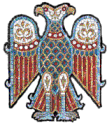








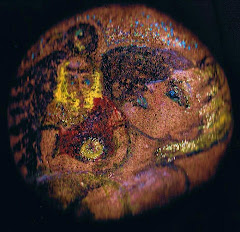








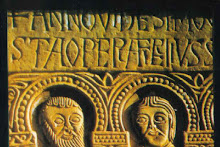
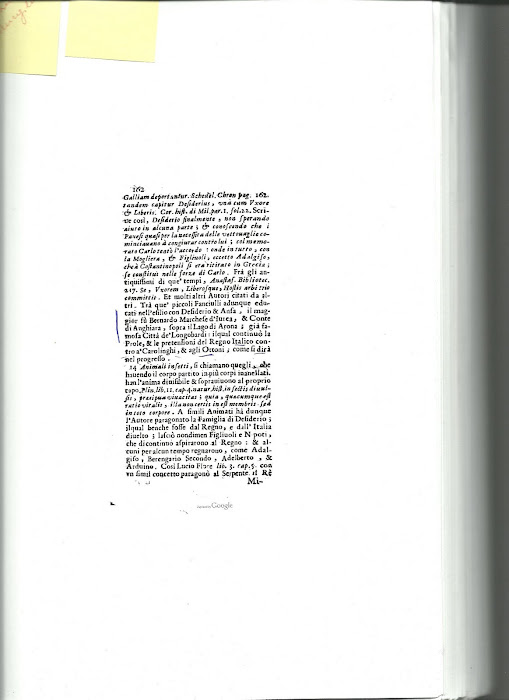.jpg)




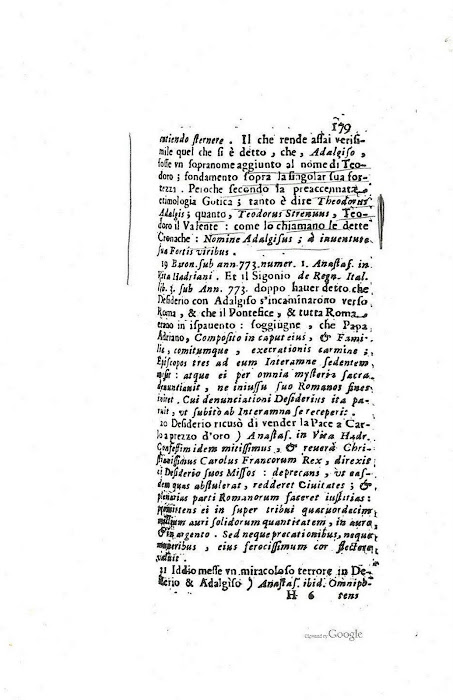.jpg)





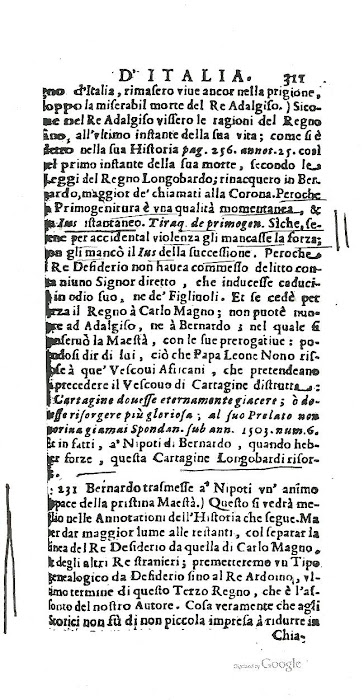.jpg)
.jpg)
.jpg)
.jpg)
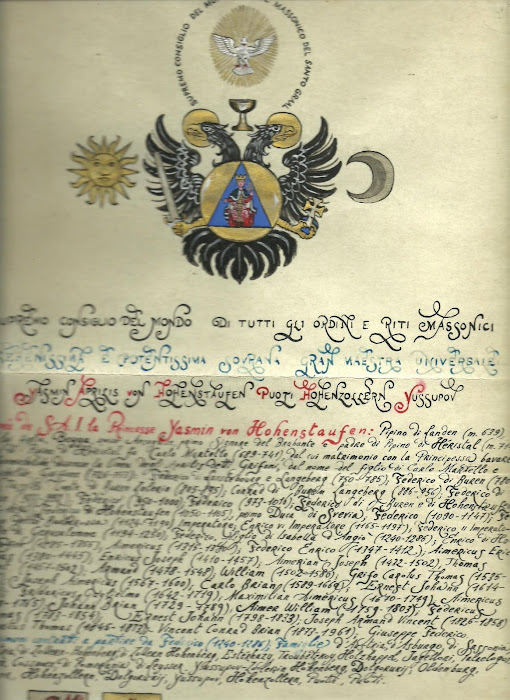.jpg)

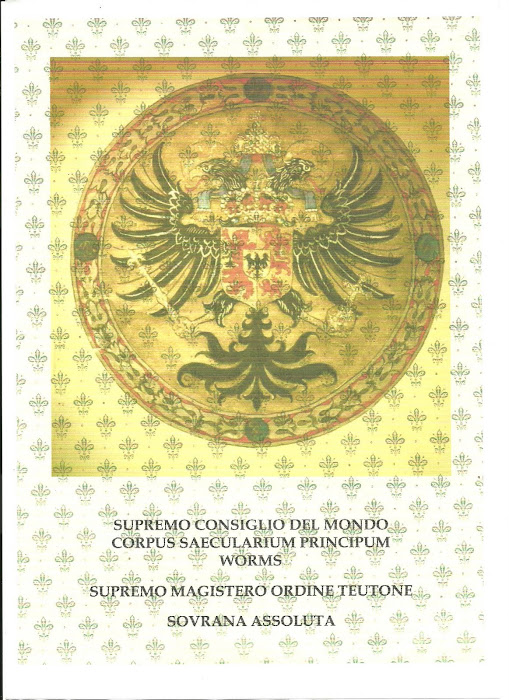.jpg)
.jpg)
.jpg)
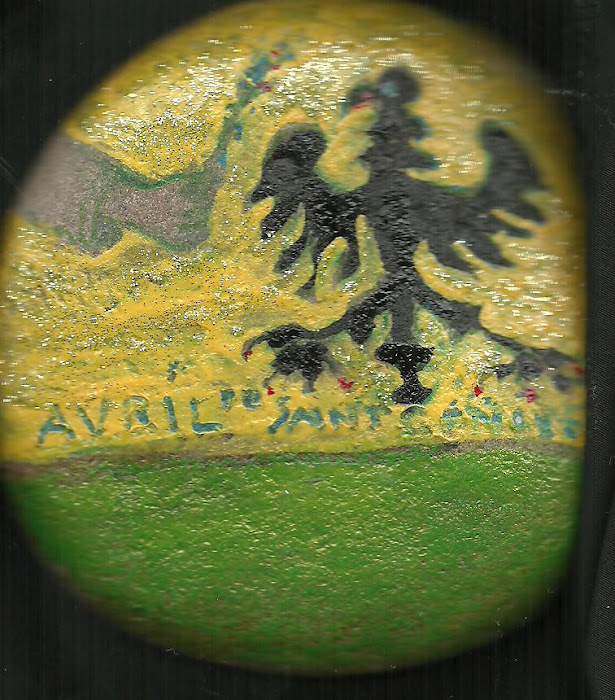.jpg)

sposa_Gripho_Carolus_Thomas_Stauferis.png)
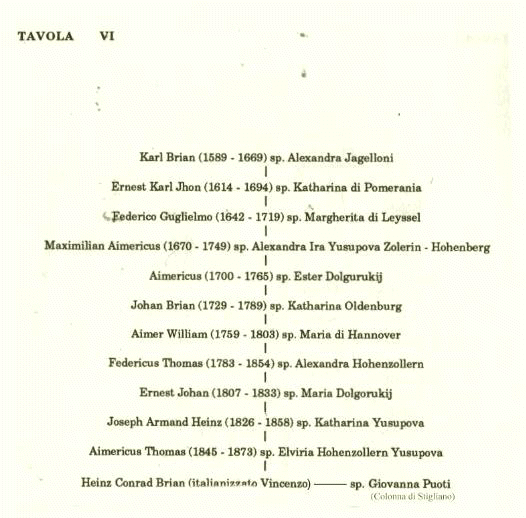




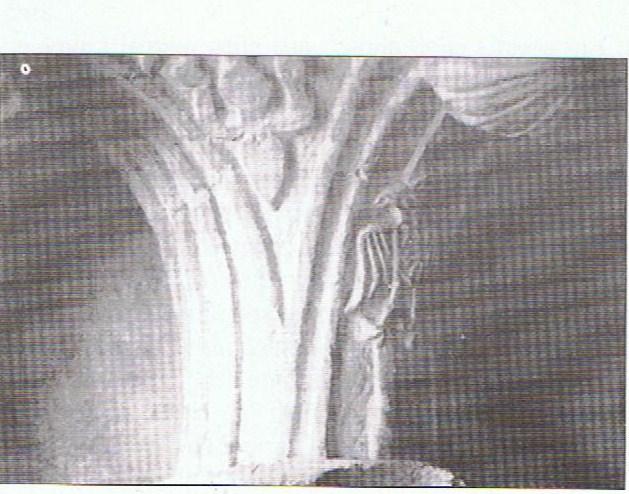



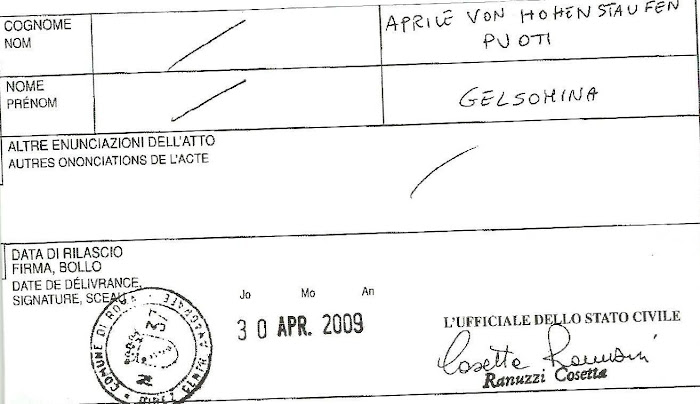









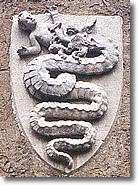























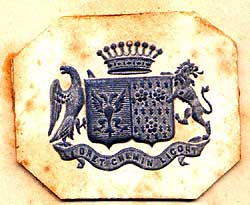


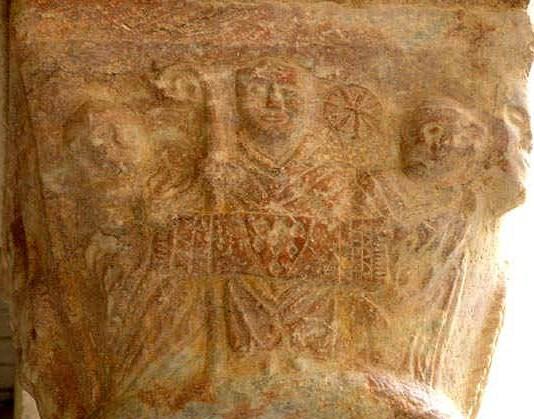




































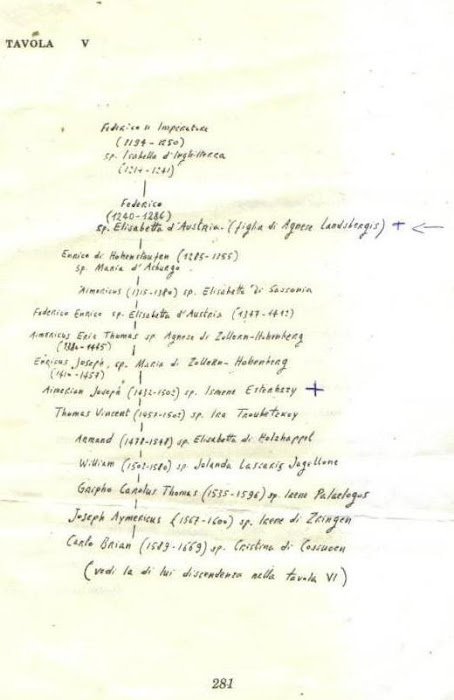










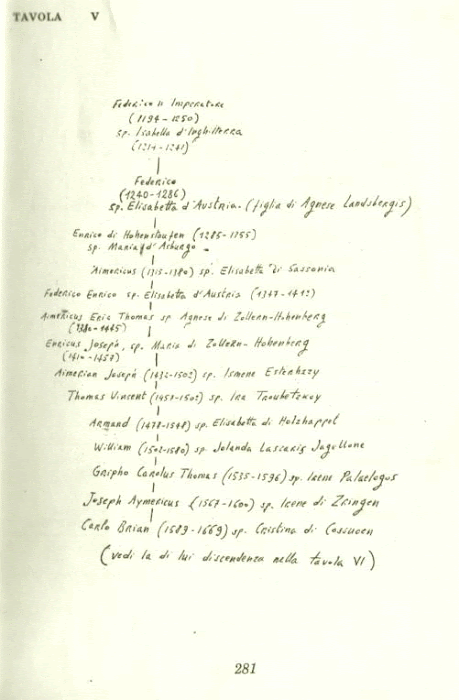sposa+Gripho+Carolus+Thomas+Stauferis.gif)
